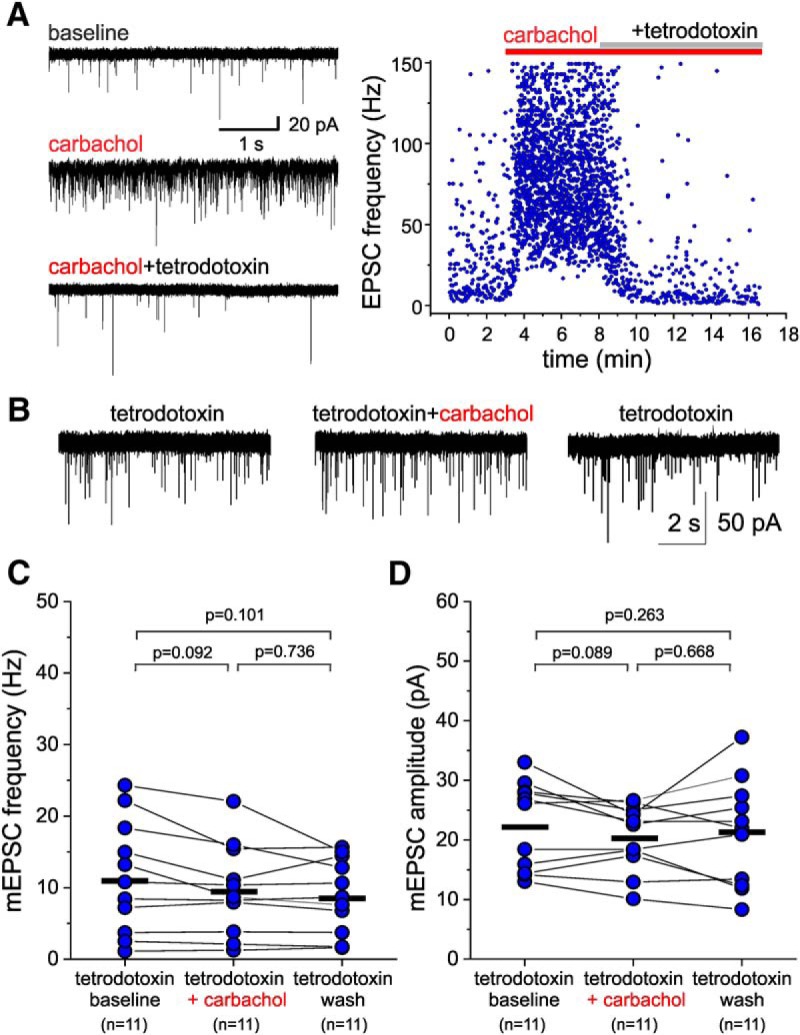Figure 7.

The voltage-dependent Na+ channel blocker tetrodotoxin prevents the carbachol-induced potentiation of sEPSCs recorded from L3-6 PV+ BCs. A, left panel, sEPSCs recorded from a L3-6 BC during baseline, after addition of carbachol (20 µM) and after addition of tetrodotoxin (1 µM). Right panel, Time-course plot illustrating the effects of carbachol and tetrodotoxin addition on the instantaneous EPSC frequency (estimated as the inverse of the inter-event interval) for the EPSCs in the experiment in the left panel. B, mEPSCs recorded in the continuous presence of tetrodotoxin (1 µM) before and after the addition of 20 µM carbachol. C, Carbachol applied in the continuous presence of tetrodotoxin did not increase the mEPSC frequency, while producing a small but significant decrease when estimated 20 s before carbachol application (tetrodotoxin baseline), 20 s before beginning of washout (tetrodotoxin + carbachol), and after ≥10 min of washout (tetrodotoxin wash; one-way RM ANOVA F(2,16) = 4.634, p = 0.022; shown in the figure are the p value results of Sidak-corrected, post hoc pairwise comparisons). The black horizontal bars indicate the mean value for each sample. D, Carbachol applied in the continuous presence of tetrodotoxin did not have significant effects on mEPSC amplitude when estimated 20 s before carbachol application (tetrodotoxin baseline), 20 s before beginning of washout (tetrodotoxin + carbachol), and after ≥10 min of washout (tetrodotoxin wash; one-way RM ANOVA F(2,16) = 1.281, p = 0.299; shown in the figure are the p value results of Sidak-corrected, post hoc pairwise comparisons). The black horizontal bars indicate the mean value for each sample.
